Pasadena, CA Pollen and Allergy Report for Summer 2023
Pollen Allergy Trends in Pasadena, CA
When is pollen lowest in Pasadena, CA?

February
Lowest month total PPM
Avg. PPM
When is pollen highest in Pasadena, CA?

March
Highest month total PPM
Avg. PPM
How does pollen in Pasadena, CA compare to California?
Pasadena has a lower average PPM than the state of California.
Pasadena yearly avg PPM:
California yearly avg PPM:
How does pollen in Pasadena, CA compare to the USA?
Pasadena has a lower average PPM than the USA.
Pasadena yearly avg PPM:
USA yearly avg PPM:
Is pollen worse this year in Pasadena, CA?
Spring 2023 was better than spring 2022.
Spring 2023 PPM:
Spring 2022 PPM:
Average PPM in Pasadena, CA
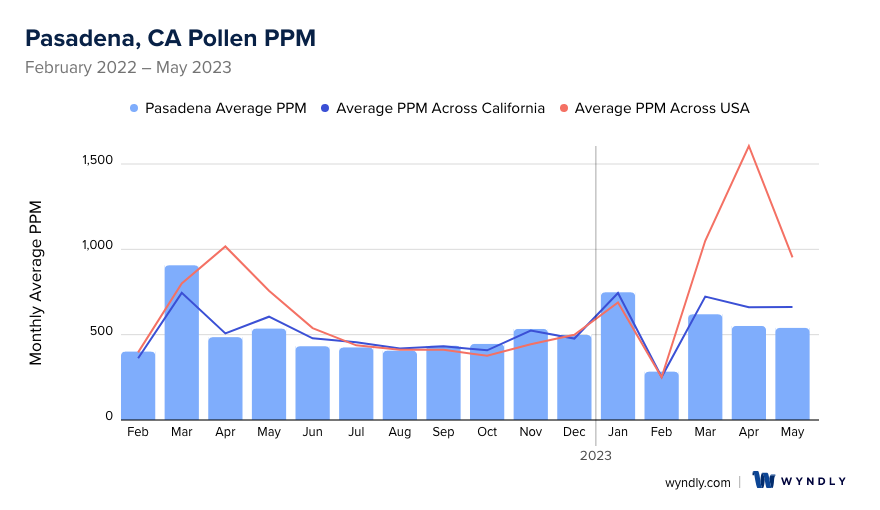
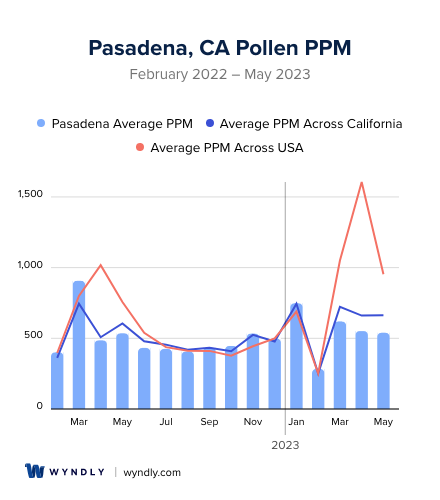
Pasadena, CA Pollen and Allergy Breakdown by Month
Grass
When is grass pollen highest in Pasadena, CA?
May has the highest grass pollen in Pasadena, CA with an average PPM of
When is grass pollen lowest in Pasadena, CA?
December has the lowest grass pollen in Pasadena, CA with an average PPM of
Tree
When is tree pollen highest in Pasadena, CA?
March has the highest tree pollen in Pasadena, CA with an average PPM of
When is tree pollen lowest in Pasadena, CA?
August has the lowest tree pollen in Pasadena, CA with an average PPM of
Weed
When is weed pollen highest in Pasadena, CA?
November has the highest weed pollen in Pasadena, CA with an average PPM of
When is weed pollen lowest in Pasadena, CA?
February has the lowest weed pollen in Pasadena, CA with an average PPM of
Pasadena, CA Pollen Monthly Breakdown by Pollen Type
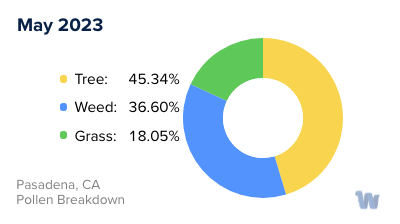
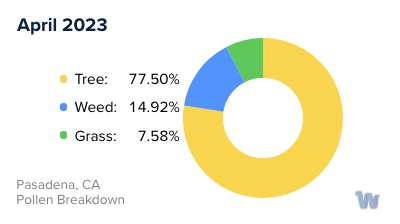
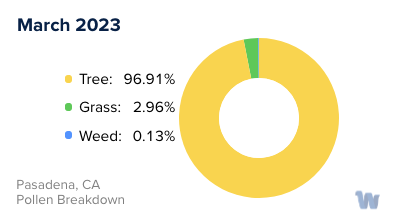
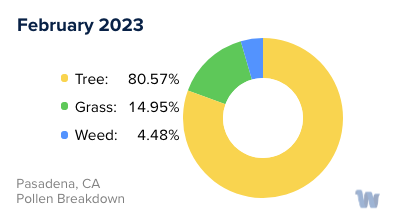
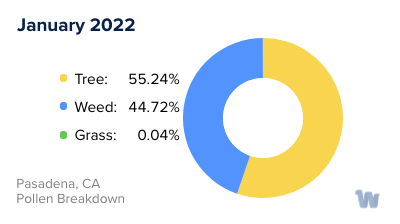
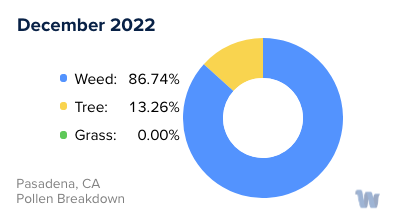
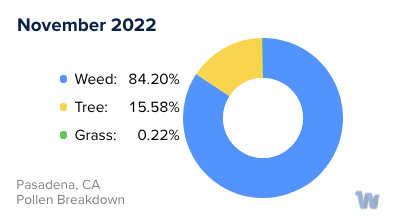
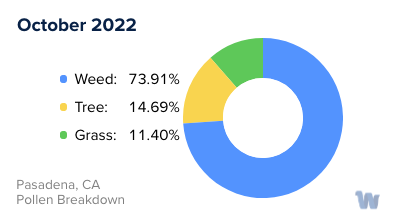
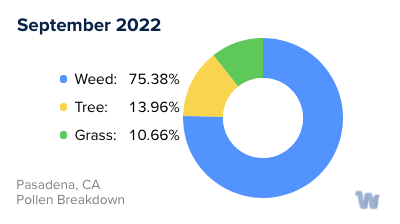
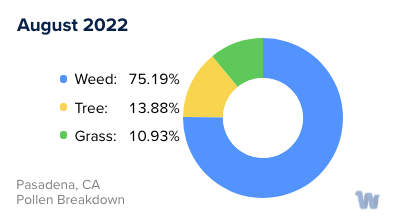
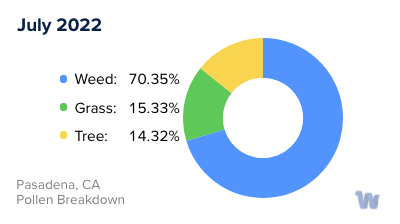
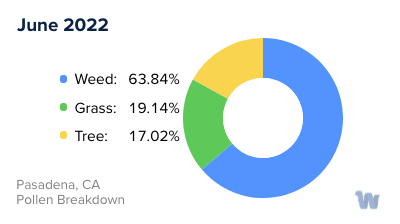
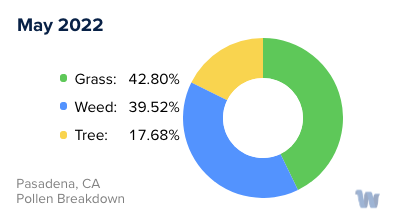
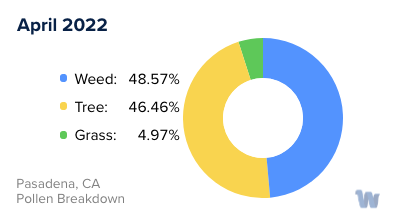
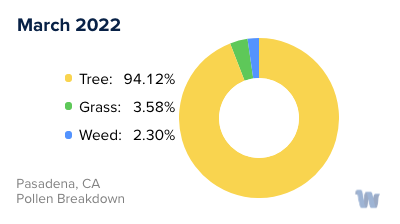
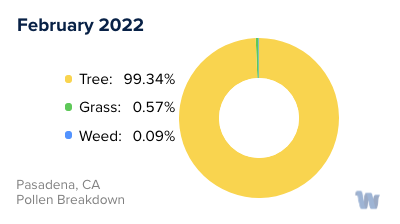
Pollen and Hay Fever in Pasadena, CA
Pollen allergies, often referred to as hay fever, can be a seasonal nuisance for many residents of Pasadena, California. This condition is triggered by the inhalation of pollen particles released by various types of plants throughout different seasons of the year.
In Pasadena, the types of pollen that cause the most discomfort vary with the changing seasons. In the spring, the most common culprits are trees, specifically oak, cedar, and pine. These trees release large quantities of pollen into the air, which can easily be inhaled, causing allergic reactions in sensitive individuals.
As we transition into the summer months, grass pollens take center stage. Bermuda grass, ryegrass, and Kentucky bluegrass are particularly prolific in the Pasadena area. These grasses release their pollen during the warmest parts of the day, often leading to an afternoon spike in hay fever symptoms.
Finally, in the fall, weed pollens, especially from ragweed and sagebrush, become the primary allergens. These plants have evolved to release their pollen during the drier months of the year, ensuring their survival and unfortunately contributing to a rise in allergy symptoms.
To complicate matters, Pasadena's mild and dry climate allows for an extended pollen season, with some plants releasing their pollen almost year-round. Additionally, the city's geographical location, nestled in the San Gabriel Valley, can sometimes trap pollen, exacerbating the effects of these allergens.
Living with pollen allergies in Pasadena can be challenging due to these environmental factors. However, understanding the types of pollen prevalent in each season, and being aware of the conditions that can increase pollen levels, can help residents better anticipate and navigate their allergy symptoms. Knowledge is power, and in this case, it's the power to understand the world around us, even when that world makes us sneeze.

